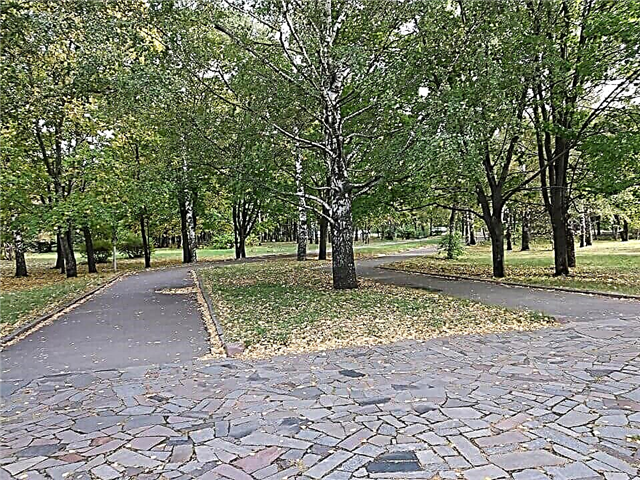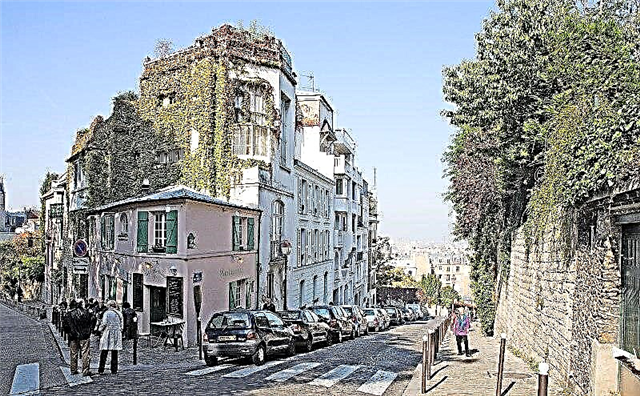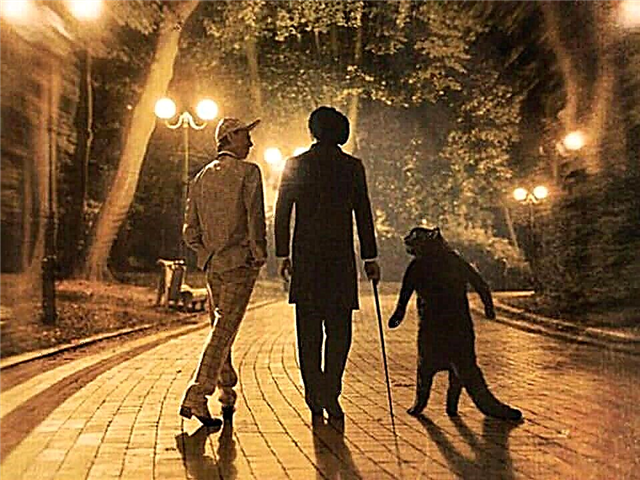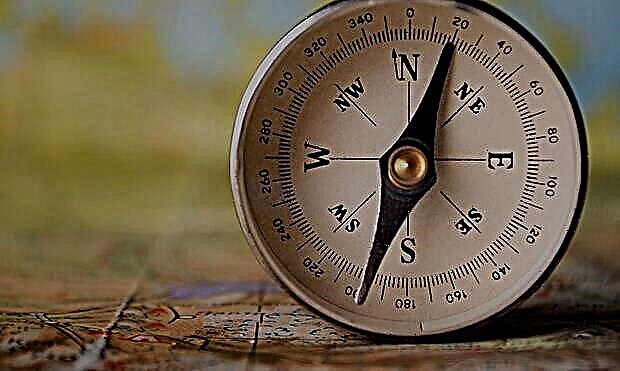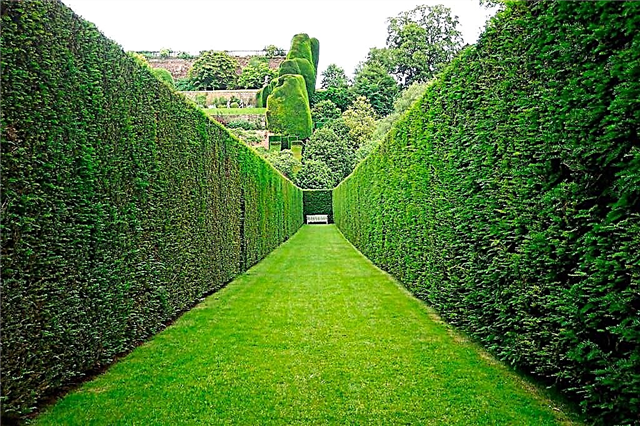In the French department of Dordogne (south-west of the country), not far from the town of Vezac, among the Perigord hills, there is a uniquely beautiful corner that does not leave indifferent anyone who was lucky enough to visit it - the Hanging Gardens of Marquessac.
This place, created by people over the years and surrounded by picturesque French villages, has long attracted tourists from all over the world who want to be in the middle of a man-made miracle of nature at least for a while and enjoy the skill of local gardeners who have created a bizarre landscape around an ancient castle standing on a hill. ... Hanging gardens are called because they are planted around it with terraces, from a distance it seems that they are hanging from the mountain.
How to get a visa to France on your own. Read in our life hack.

The history of the Marquessac gardens
The history of the appearance of the gardens dates back to the beginning of the 17th century. Then a nobleman named Bertrand Vernet de Marquessac, who served as an adviser to the royal court of Louis XIV, ordered a park to be built around his castle. To do this, he invited a student of the then famous landscape designer (that is, of course, gardeners were not called at that time) André Le Notre, the founder of the system of a regular French park, who worked on the gardens of Versailles.
Initially, the Marquessac gardens were laid out in accordance with the then classical style, but glorified them all over the world, turning them into what can be seen now, another owner of the estate, who inherited it in 1861, Sarlat Julien de Serval. He was the judge of a nearby town, with a passion for plant growing.
In his younger years, he served in Italy, was fascinated by the nature of this country and tried to plant boxwoods, pines, cypresses, cyclamens and other plants characteristic of the Mediterranean climate on French soil, which he succeeded to the fullest. Each bush was cut in the most careful way, and in such a way as to repeat the relief of the surrounding area.

Serval worked on the garden for the rest of his life - 30 years. It was then that the garden got the look that everyone admires today. True, in the 20th century the park was going through hard times: it was little looked after and it fell into desolation. The descendants of the judge decided to put the gardens in order only at the end of the century: in 1996, Cleber Rossillon took over.
It took Serval's great-great-great-grandson 3 years to return the park to its former beauty, although he opened the park to visit tourists in 1997 and only in the first year of operation it was visited by about 200 thousand people, and now the number of visitors is estimated at about 140 thousand in year.

Rossillon tried to reproduce exactly the garden that his ancestor conceived and implemented. For this, old photographs were carefully studied, and now, according to experts, boxwood shrubs have exactly the same shape as they were under Serval. The Marquessac gardens today are considered to be one of the most beautiful and picturesque in all of France.

The gardens of the Marquessac castle now
Now the Marquessac Gardens is a 6-kilometer labyrinth of 150 thousand hundred-year-old boxwood bushes, hand-cut in the most bizarre way. They form the backbone of the park. Boxwood is a plant that lives for about 500 years, it grows very slowly, therefore it is easy to decorate, allowing you to create the most unusual shapes. Tourists call them "green lambs".

Trees of other species also grow here: cypresses, strawberry trees, junipers, pines, oaks. Walking in the park, you can hide in gazebos twined with greenery, enjoy the coolness near artificially created waterfalls. For those wishing to dine in the bosom of nature, there are picnic areas, you can just sit on benches carved into the rock, located in quiet secluded places. Children will not be bored either - they can always have fun on the playgrounds.
What to see in the gardens of the Marquessac castle
There are no places closed for tourists in the park: you can walk everywhere - along the boxwood labyrinth, the embankment, the main alley, which is a half-kilometer tunnel of plants. In the southern part of the garden, where the air is drier, mostly evergreen oaks and rock maples grow. Field maples and hornbeams are planted on the more humid northern slope of the hill. Plates and signs are placed everywhere, from which an inquisitive tourist can get more detailed information about the plants.

The alleys pass by the pigeon house, where birds of the rarest species of this species live, and everywhere along the way you will meet important pacing peacocks. In the "Pavilion of Nature" you can see an exhibition of dioramas created in the 19th century.
Shady alleys lead to the observation deck of the castle, from where a stunning view of the Dordogne river valley opens from a height of 800 m - the river itself, villages, fields and meadows. This is the central place where all excursions end (tourists are offered 3 routes). The castle itself is built of stone tiles and limestone, which gives it a special old French charm. It has not been rebuilt since its construction, and some of its characteristics are simply amazing: for example, the weight of the old castle roof is more than 500 tons.

The park is also open in the evening. This is the time for true romantics: the garden is illuminated by numerous lamps installed under almost every bush. In addition, candles are lit (there are about 2000 of them here), which gives the garden a truly magical look. Evening excursions (they are called "Marquessac by candlelight") will also appeal to those who do not like the heat: on a summer night in the gardens, travelers enjoy a pleasant coolness.
However, they do not take place every day, but only on Thursdays in July and August from 19 to 24.00. These days, classical music is played in the park, and the children are entertained by animators. For the smallest, even a training course has been developed: kids receive initial information about nature and its inhabitants.

When the gardens are open
The park welcomes guests all year round. In July and August, the gardens of the Marquessac Castle are open to the public from 9 am to 8 pm (Thursdays until midnight). Opening hours of the park in April - June and September - from 10.00 to 19.00, in February – March and October – November (until the 11th) - from 10.00 to 18.00, from November 12 to January 31 - from 14.00 to 17.00.
Adults will have to pay € 7.8 for a ticket, a ticket for children and adolescents 10 - 18 years old costs half the price (€ 3.9), for children under 10 years old admission is free. Evenings "Marquessac by candlelight" will cost adults € 13, children € 6.50.

According to numerous travelers, the best time to visit the Marquessac Gardens is from August to October. This is the time of flowering of Italian cyclamens - the most beautiful period in the region, at this time the gardens look really unforgettable: the earth seems to be covered with a variegated carpet.
Interestingly, only four people look after the garden, but they do an excellent job so that the park will delight all visitors, young and old.

How to get there
You can get to the place yourself - by a rented car. There are also regular bus services from Bordeaux and Toulouse. For those who prefer to travel in the company of like-minded people, bus excursions are organized from the same cities. The Marquessac Gardens are one of the most visited places in France.
What to bring from France - an overview of the best souvenirs and gifts.
Use the services of kiwitaxi and at the airport, at the specified time, the driver will be waiting for you, help with the luggage and promptly take you to the hotel. Several car classes are available - from economy to Minibus with 19 seats. The price is fixed and does not depend on the number of passengers and the address within Bordeaux. A taxi from / to the airport is a convenient and comfortable way to get to your destination.

